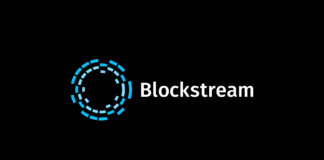The world of blockchain technology is in a constant state of evolution, with innovative blockchain projects continuously redefining the boundaries of what’s possible. At the forefront of this dynamic landscape stands Polygon network, a leading Ethereum Virtual Machine compatible Layer 2 solution that has captured the attention of the Web3 development community. In a move that promises to reshape the Polygon platform ecosystem, the network has announced a highly anticipated transition – the migration from its native MATIC token, an ERC-20 token, to a brand-new token called POL crypto, set to take effect on September 4, 2024.
This strategic shift, known as the MATIC transition, holds immense significance, not only for Polygon crypto’s existing user base but also for the broader blockchain industry. As we delve into the intricacies of this transition, we’ll uncover the driving forces behind this change, the technical implications, and the potential impact it could have on the Polygon blockchain network and the wider cryptocurrency landscape.
Related Read: Polygon (MATIC) Plunges to 2-Year Lows as Bearish Sentiment Persists
The Genesis of the POL Token
The announcement of the MATIC to POL crypto transition has been met with considerable anticipation within the cryptocurrency community. Over the past year, the Polygon labs team has been meticulously planning and preparing for this pivotal moment, engaging with its vast user base to ensure a seamless and well-informed migration process.
At the heart of this transition lies the POL token, a “hyperproductive” asset designed to play a crucial role in the Polygon blockchain network’s evolution. Polygon crypto has emphasized the versatility of POL, stating that it can provide valuable services to any chain within the Polygon platform ecosystem, including the AggLayer – a key component of the network’s future plans.
Polygon Network: From MATIC to POL
The migration from MATIC to POL is not a simple token swap; it represents a comprehensive upgrade to the Polygon blockchain protocol, one that has been thoroughly tested and refined to ensure a smooth and secure transition for all users.
Prior to the mainnet launch, Polygon Village conducted a testnet migration on July 17, 2024, allowing developers and users to familiarize themselves with the new polygon token and identify any potential issues. This proactive approach underscores Polygon crypto’s commitment to delivering a seamless user experience and maintaining the integrity of the network.
Seamless Migration for MATIC Holders
Polygon labs has designed the transition process with the user in mind, ensuring that the migration from MATIC to POL crypto is as straightforward as possible for the majority of its token holders.
For MATIC holders on the Polygon PoS chain, the conversion will happen automatically, with their tokens being seamlessly upgraded to POL. However, users holding MATIC on other platforms, such as Ethereum blockchain, Polygon zkEVM, or centralized exchanges, will need to follow specific migration procedures to participate in the transition.
Polygon crypto has also addressed the situation for those who have delegated their MATIC tokens on Ethereum, stating that these assets will be automatically converted to POL, with an option to opt out of the migration if desired.
The Evolving Role of POL
The POL token is poised to assume a pivotal role within the Polygon platform ecosystem, serving as the primary asset for transaction fees and staking. This transition marks a significant evolution in Polygon crypto’s tokenomics, as POL is set to inherit MATIC’s existing distribution and total MATIC supply.
Beyond these core functionalities, Polygon labs has outlined ambitious plans for POL’s future utility. The polygon token is envisioned to play a crucial role in the network’s Staking Hub, slated for release in 2025, and will be integral in facilitating block generation, zero-knowledge proofs generation, and participation in Data Availability Committees (DACs).
Empowering Polygon’s Validators and Governance
The migration to POL also holds profound implications for the Polygon blockchain network’s decentralization and governance. By transitioning to POL as the primary token for proof-of-stake, Polygon crypto is empowering its user base to become active network validators, further strengthening the network security and decision-making processes.
This shift aligns with Polygon crypto’s vision of becoming a “network of networks,” where POL serves as a unifying force, providing liquidity and shared state across multiple chains within the Polygon platform ecosystem. As the community gains a greater stake in the network’s future, the decision-making process is expected to become more democratized, with POL holders wielding increased influence over the network’s strategic direction.
Navigating the Transition: Community-Driven Timelines
While Polygon labs has set September 4, 2024, as the official date for the MATIC to POL migration, the network has adopted a flexible, community-driven approach to the transition timeline. This approach recognizes the diverse needs and preferences of Polygon crypto’s user base, allowing for a more inclusive and adaptable migration process.
Rather than imposing a rigid deadline, Polygon blockchain has indicated that the community will have the authority to collectively determine the cutoff point for the migration. This collaborative decision-making process underscores Polygon crypto’s commitment to transparency and user empowerment, ensuring that the transition aligns with the broader ecosystem’s interests.
Addressing Potential Challenges and Risks
As with any significant protocol upgrade, the Polygon labs team is cognizant of the potential challenges and risks that may arise during the MATIC to POL transition. To mitigate these concerns, the network has undertaken a comprehensive testing phase, including the aforementioned testnet migration, to identify and address any vulnerabilities or technical issues.
Additionally, Polygon blockchain has provided clear guidelines and support resources to assist users in navigating the migration process, particularly for those holding MATIC on external platforms. By prioritizing user education and communication, Polygon crypto aims to ensure a seamless transition and minimize the likelihood of disruptions or asset losses.
Unlocking New Possibilities: The Polygon 2.0 Vision
The transition from MATIC to POL is not merely a token swap; it is a pivotal step in Polygon crypto’s ambitious “Polygon 2.0” roadmap. This strategic vision encompasses a broader transformation, positioning Polygon blockchain as a leading “network of networks” within the blockchain ecosystem.
By empowering POL as a versatile and “hyperproductive” token, Polygon labs is laying the foundation for enhanced blockchain interoperability, scalability, and security across its growing network of interconnected chains. This evolution aligns with the increasing demand for seamless cross-chain integration and collaborative blockchain solutions, solidifying Polygon crypto’s role as a key player in the ever-evolving decentralized finance (DeFi) landscape.
Conclusion
The transition from MATIC to POL represents a significant milestone in Polygon crypto’s journey, marking a transformative shift in the network’s technological capabilities and strategic vision. By introducing the POL token, Polygon blockchain is poised to enhance its scalability, security, and interoperability, solidifying its position as a leading player in the Ethereum Layer 2 landscape.
As the September 4, 2024, migration date approaches, the Polygon Village community eagerly anticipates the unveiling of this new era, one that promises to unlock unprecedented possibilities for the network and the broader blockchain ecosystem. With a steadfast commitment to user empowerment, regulatory compliance, and collaborative decision-making, Polygon crypto’s transition to POL stands as a testament to the network’s unwavering dedication to innovation and the advancement of decentralized technologies, positioning itself as the Value Layer of the Internet.













